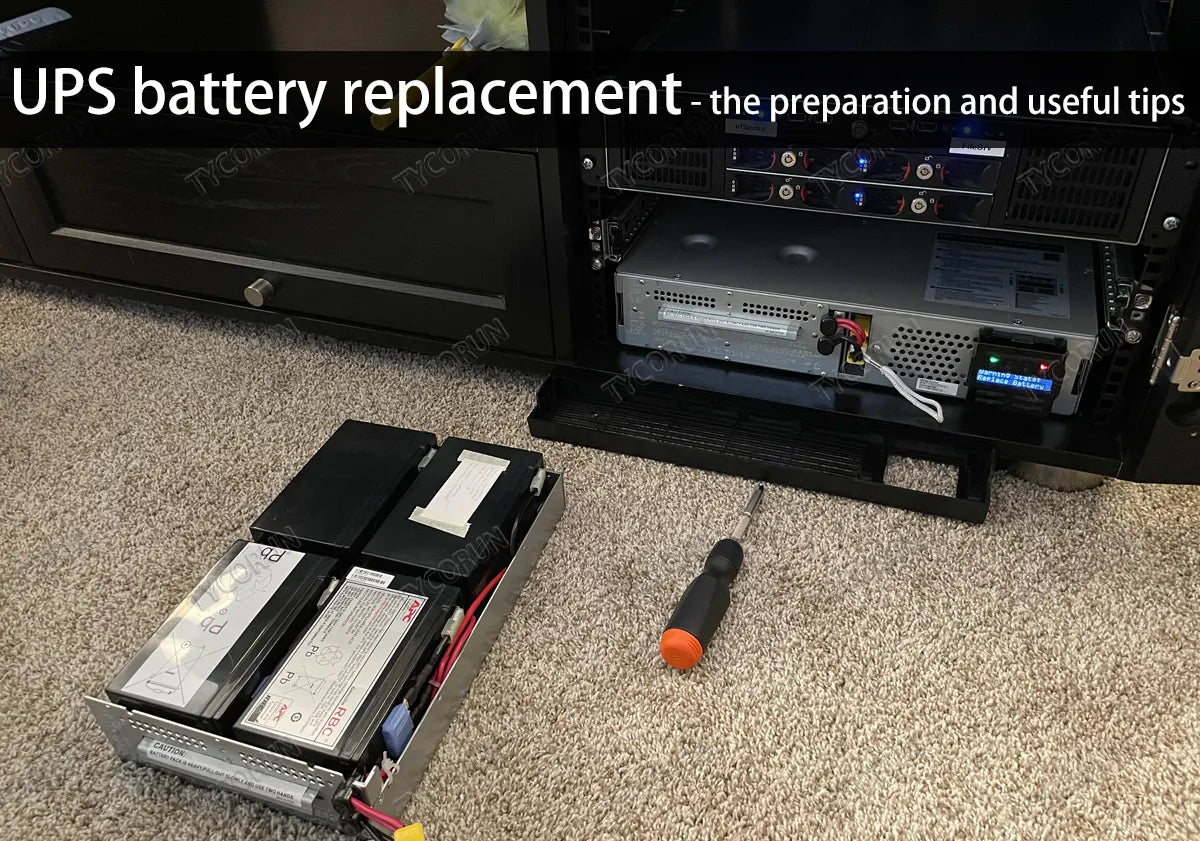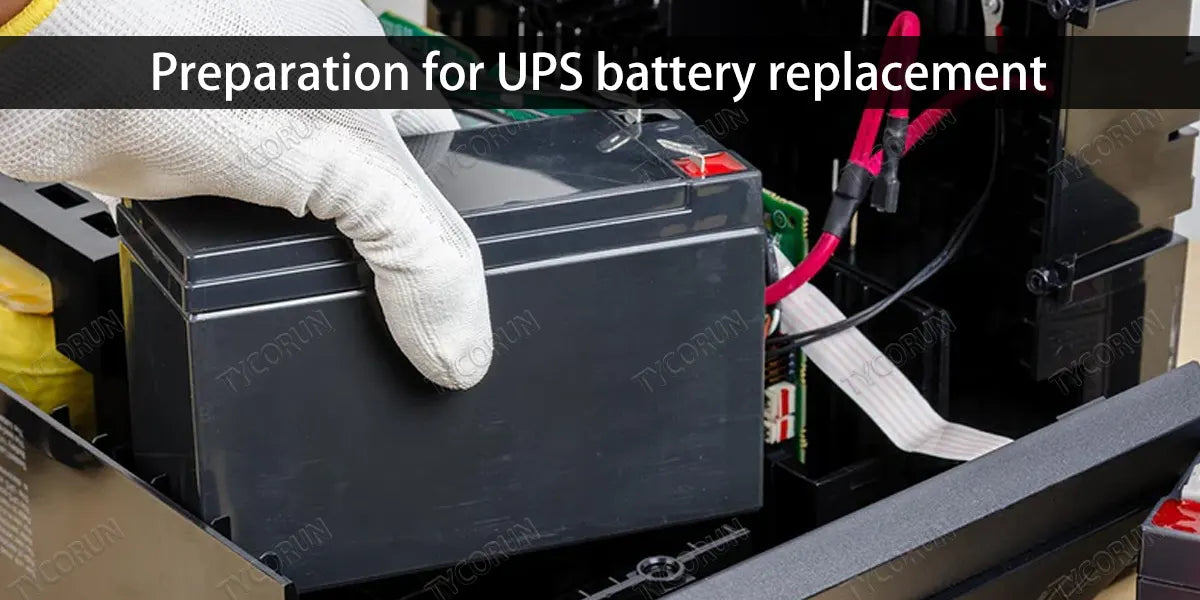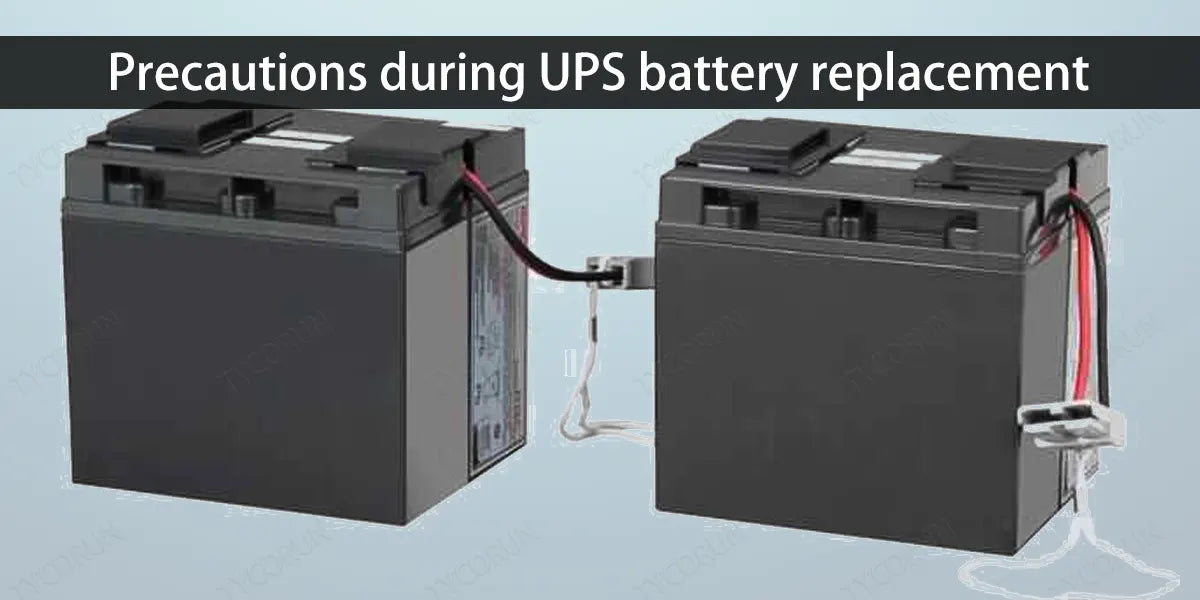
Regularly replacing the old UPS batteries in the data center can avoid possible hidden dangers in the battery and reduce the failure rate of the UPS host due to battery problems. A good battery pack can ensure the normal operation and backup time of the UPS system, and ensure the safe operation of important equipment such as the computer room.
However, UPS battery replacement has strict technical and safety standard requirements. You must take relevant safety protection measures. This article will introduce to you the precautions for UPS battery replacement and how to maintain it after replacing.
Main content:
1. Preparation for UPS battery replacement
- The technicians who perform battery replacement should go to the computer room for on-site inspection in advance and communicate with the user's management personnel on related work: battery arrival, acceptance status, battery placement, etc.
- Survey the location of the UPS host and battery pack in the computer room, and conduct technical data registration of the UPS uninterruptible power supply h ost, battery pack, UPS host power distribution system, etc. Understanding the relevant technical data of the UPS uninterruptible power supply system will help with UPS battery replacement.
- According to the site conditions of the survey, arrange the work of the UPS battery replacement implementation engineer and assistant personnel, and prepare tools required for construction such as screw sets, adjustable wrenches, quick wrenches, electrical insulation tape, small transport trailers, and multimeters.

2. Proceed UPS battery replacement
- Status recording:
After receiving the notice that the UPS battery can be replaced, the UPS battery replacement implementation engineer went to the site to make preparations: ensuring the input power supply of the UPS host, checking the registration of new and old batteries, sealing the smoke detector of the fire protection system in the computer room and preparing carbon dioxide fire extinguishers.
Before UPS battery replacement, make relevant registration records for the UPS host, old battery packs, battery monitor and other equipment, especially the placement of batteries on each layer and the wiring of the battery monitor. Mark them and draw a connection diagram. Ensure that the performance after UPS battery replacement is consistent with the original condition.
- UPS battery replacement:
After everything is ready, replace the battery, disconnect the connection switch between the UPS host and the battery pack to ensure the safety of the staff when replacing the battery. Disassemble the batteries of the original battery pack. The UPS battery replacement implementation engineer is responsible for the battery disassembly, and the relevant auxiliary technicians carry out the transportation of new and old batteries.
When removing the old battery, place the removed battery cables and battery terminal screws neatly in a box to ensure that the computer room is tidy and clean. After disassembling the old batteries, place the old batteries and old battery racks neatly. Place the new battery rack assembly in the designated position and start installing the new battery at the same time.
Place the new battery on the battery rack so that the position and direction of the new battery on the battery rack can be adjusted optimally. After connecting a set of batteries, check whether the connection wires of the battery terminals are firm. And check whether the total voltage of the battery pack is normal. The positive and negative poles of the batteries must be connected correctly.

- Work status confirmation:
After UPS battery replacement, mainly check the following aspects:
① The on-site environment of the UPS host room, the placement and connection of the batteries.
② UPS manufacturer engineers use Emerson UPS equipment-specific software to debug and set the battery time parameters of the host to ensure that there will be no false alarms during the normal life of the battery.
③ Detect the input and output voltage, current, charging voltage, working status, etc. of the UPS host to ensure that all detection data are within the required parameter range and keep records.
④ Confirm that the UPS host and battery are in normal operation, and then conduct a mains power outage test to detect automatic battery switching and battery power supply time.
Environmental cleanup:
After the UPS battery replacement is completed, clean the UPS room and remove debris to ensure a good environment in the UPS room. Resume the preparation work done in the computer room before UPS battery replacement. And the new battery pack should be charged for about 24 hours.
3. Implementation time
Due to the large number of UPS batteries to be replaced, the battery weight is also relatively heavy, and considering the construction conditions on site, the UPS battery replacement work is not that easy.
Taking into account the preparation before UPS battery replacement and the installation debugging work after, the total construction time is estimated to be about 8 hours. During the replacement process, the power supply of the UPS host should not be interrupted, and it should not affect the power consumption of other equipment such as the user's computer room.

4. Precautions during UPS battery replacement
Be sure to observe the following when installing UPS batteries:
- Do not install UPS batteries in sealed spaces or near fire, otherwise there is a risk of explosion and fire;
- Do not cover the UPS battery with anything like vinyl film that may cause static electricity. Static electricity may sometimes cause an explosion;
- Do not install UPS batteries in places where water may enter, otherwise there is a risk of electric shock or fire;
- Do not install UPS batteries in environments exceeding -40°C~60°C;
- Do not use batteries in places with dust, otherwise it may cause a short circuit in the UPS battery;
- When placing the battery in the box for use, pay attention to air circulation;
- Do not press the upper cover with sticky or label-like objects, because there is an exhaust valve under the upper cover, and the gas generated in the battery will not exhaust;
- Number of parallel connections: During float charging, plug-in terminal batteries can only be associated with up to three columns. There are no special restrictions on bolt-on terminals, but the smaller the number of parallel connections, the greater the reliability. In addition, when connecting in parallel, it is necessary to consider making the wiring conductors and contact resistances between each column equal. In order to maintain a balanced charging and discharging battery in each column, do not use more than three columns in actual use.

5. Precautions for the use of UPS battery
The UPS battery is the main component of the entire UPS power supply, unlike inverters (like 2000w inverter or 3000w inverter) that work with batteries. Once the UPS battery stops working, the entire UPS power supply will no longer work normally. Therefore, when using the UPS power supply, we should pay attention to the precautions for using the UPS battery.
The precautions for using UPS batteries are summarized as follows:
- Confirm that the usage conditions meet the manufacturer's specifications.
- Be sure to charge it after first use or after long-term storage.
- The battery used in UPS is used for float charging. If the battery is used frequently (like recycling), the trickle life of the battery will be seriously affected.
- Perform regular battery checks.
- If you find that the battery cell is deformed or leaking, please do not use it and replace it.
- If the connections at the terminals are not tight, there is a risk of fire.
- It is recommended that if there is no power outage, the battery should be discharged once every 3 to 6 months. If any abnormality is found in the charging voltage or discharge characteristics of the battery, please replace the battery.
- When the battery capacity is less than 50% of the initial capacity, the battery should be replaced in time.
6. Old battery disposal
Replaced old batteries should be recycled in a timely manner (pay special attention to batteries with leaks) to avoid contamination of the human body, equipment and environment caused by chemical substances in the batteries.

7. Maintenance after UPS battery replacement
① Place in a suitable ambient temperature:
An important factor affecting battery life is ambient temperature. Generally, the optimal ambient temperature required by battery manufacturers is between 20-25°C. According to experimental measurements, once the ambient temperature exceeds 25℃, the battery life will be shortened by half for every 10℃ of increase.
At present, the batteries used in UPS are generally sealed lead-acid batteries, and their design life is generally 5 years, which can only be achieved under the environment required by the battery manufacturer. If the specified environmental requirements are not met, the length of its life will vary greatly. Compared with lead-acid battery, LFP battery is more maintenance-free, with longer service life. For more information, you can check the article of how to replace your UPS battery with lithium-ion.
In addition, the increase in ambient temperature will increase the chemical activity inside the battery, thereby generating a large amount of heat energy, which in turn will increase the ambient temperature. This vicious cycle will accelerate the shortening of the battery life.
② Regular charging and discharging:
The float voltage and discharge voltage in the UPS power supply have been adjusted to the rated value when leaving the factory, and the discharge current increases with the increase of the load. The load should be reasonably adjusted during use, such as controlling electronic equipment such as microcomputers.
Generally, the load should not exceed 60% of the UPS rated load. Within this range, the battery's discharge current will not be over-discharged. Because the UPS is connected to the mains for a long time, in an environment where the power supply quality is high and mains power outages rarely occur, the battery will be in a floating charge state for a long time.
Over time, the activity of the battery's chemical energy and electrical energy will be reduced, and the aging will be accelerated, thus shortening the service life. Therefore, it should generally be fully discharged every 2-3 months. The discharge time can be determined according to the battery capacity and load size. After a full load discharge is completed, recharge for more than 8 hours as required.
③ Use the communication function:
At present, most large and medium-sized UPS have operable functions such as communication with microcomputers and program control. Install the corresponding software on the microcomputer, connect the UPS through the serial/parallel port, and run the program to communicate with the UPS using the microcomputer.
Generally, it has functions such as information query, parameter setting, timing setting, automatic shutdown and alarm. Through information query, you can obtain information such as mains input voltage, UPS output voltage, load utilization, battery capacity utilization, internal temperature, and mains frequency; through parameter settings, you can set the basic characteristics of the UPS, battery life and battery exhaustion alarm, etc. Through these intelligent operations, the use and management of UPS power supply and its battery are greatly facilitated.
Related posts: UPS vs inverter, UPS surge protector, UPS safety
















